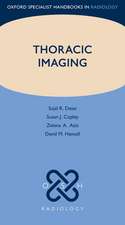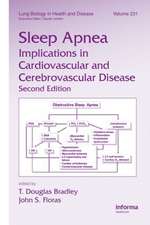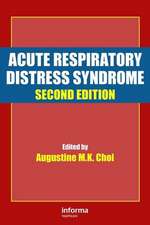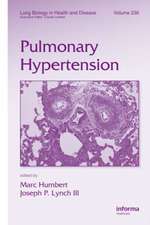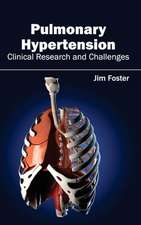Pulmonary Imaging: Contributions to Key Clinical Questions
Autor Sujal Desai, Tomas Franquet, Thomas E. Hartman, Athol Wellsen Limba Engleză Hardback – 24 oct 2007
There is little doubt that imaging tests are vital in the investigation of respiratory disease. However, because of the staggering advances in imaging technology, the practicing physician or surgeon is often faced with a wide range of potential radiologic tests. Moreover, it is fair to state that the evidence-base for the utility of some tests in specific clinical scenarios sometimes lags behind the enthusiasm and adoption in practice. Indeed, it has become apparent to many thoracic radiologists that, in certain clinical settings, the more sophisticated radiologic techniques (e.g. multidetector row CT) probably have little to offer over the more traditional modalities, such as plain radiography.
The main aim of Pulmonary Imaging: Contributions to Key Clinical Questions is to inform the reader about the value of various imaging tests in different clinical scenarios, based on the available evidence. Each chapter is co-authored by a physician and radiologist with the former defining the key clinical questions which arise in a specific setting and the radiologist outlining the role of imaging tests, if any, in answering these questions. It is hoped that this critical approach to radiologic tests will appeal not only to physicians and surgeons but also to radiologists who must regularly manage patients with respiratory disease.
Preț: 703.69 lei
Preț vechi: 883.74 lei
-20% Nou
134.67€ • 146.23$ • 113.12£
Carte tipărită la comandă
Livrare economică 22 aprilie-06 mai
Specificații
ISBN-10: 1842143247
Pagini: 201
Ilustrații: 50 b/w images, 25 color tables, 200 color halftones and 50 color line drawings
Dimensiuni: 210 x 280 x 19 mm
Greutate: 1.12 kg
Ediția:1
Editura: CRC Press
Colecția CRC Press
Public țintă
ProfessionalCuprins
GENERAL PRINCIPLES. Basic Principles of Thoracic Imaging. Anatomical Considerations in CT Imaging. CT Signs of Lung Disease (Reticular Pattern, Nodules, Ground-Glass Opacification Etc). Overview - A Clinician's Perspective of Thoracic Imaging. A PROBLEM-BASED APPROACH TO LUNG IMAGING. Obstructive Lung Diseases. Restrictive Lung Diseases. Imaging of the Patient with Haemoptysis. Investigation of the Pleural Disorders. Investigation of the SPN. Imaging of Critically-Ill and Post-Thoracic Surgery Patients. the Role of Imaging in the Investigation of Cough. Thoracic Sepsis/Infection. IMAGING OF SPECIFIC DISEASE ENTITIES. The Role of CT in the Diagnosis and Staging of Lung Cancer. The Utility of CT in the Investigation of Immunological Diseases. Integrated Imaging in the Diagnosis of Pulmonary Thromboembolism. Imaging of Inhalation/Aspiration. ALGORITHMS
Recenzii
Perhaps the first comment to make is that Sujal Desai is a fantastic radiologist who does a wonderful job, on a regular basis, of explaining the intricacies of CT to us non-experts. I think that the most important point is the one that you make in paragraph 3 of your e-mail. You make the comment "The key point of the book is that this will be the first to provide authoritative and practical guidance to the non-radiologist in the use of this technique in diagnosing and assessing disease". I would have underlined the phrase non-radiologist. CT scanning has increased year on year. It is now commonplace for non-radiologists to review scans on the wards and in the outpatient department. Many of us still feel somewhat nervous about this and dutifully review our films at x-ray meetings. It is time that we emerged from this early stage in our development and only asked for expert advice for the more difficult scans. Indeed, it is probably a reasonable goal to aim for that chest physicians should become as good at chest CT as they currently are with the plain chest x-ray.
I have no problem with the scope of your book. I greatly welcome the project and would certainly buy a copy of the finished article if it delivers on its promise. I think the major challenge that you have is to persuade your contributors to actually do what you say you want to do. It is quiet a severe challenge for any expert in the field to write a chapter that concentrates, in a sustained way, on pointing out CT findings in a way that is readily accessible to non-radiologists. If you can meet this challenge the book will be, I would predict, a huge success.
James Jett, Consultant in Pulmonary Medicine and Medical Oncology, Mayo Clinic
I have reviewed the proposal. I think a book on CT benefits and utility, as compared to other imaging methods, will be well received by pulmonary physicians in training or in practice. The idea of having each chapter co-authored by a pulmonary physician plus a radiologist is especially appealing and adds credibility for the targeted audience. Good Luck with this project.
Descriere
Unlike other texts of imaging for clinicians, Pulmonary Imaging seeks not to teach the physician or surgeon about the radiologic signs of pulmonary disease but rather inform about the value of the various imaging tests in different clinical scenarios. Accordingly, each chapter is written by a clinician and radiologist: the basic ethos is that the clinician identifies the common problem-areas and questions faced in a given field of pulmonology and that the radiologist attempts to critically define the role, if any, of the different imaging studies. Pulmonary Imaging will be valued by physicians and surgeons who regularly investigate and manage patients with pulmonary disease.
There is little doubt that imaging tests are vital in the investigation of respiratory disease. However, because of the staggering advances in imaging technology, the practicing physician or surgeon is often faced with a wide range of potential radiologic tests. Moreover, it is fair to state that the evidence-base for the utility of some tests in specific clinical scenarios sometimes lags behind the enthusiasm and adoption in practice. Indeed, it has become apparent to many thoracic radiologists that, in certain clinical settings, the more sophisticated radiologic techniques (e.g. multidetector row CT) probably have little to offer over the more traditional modalities, such as plain radiography.
The main aim of Pulmonary Imaging: Contributions to Key Clinical Questions is to inform the reader about the value of various imaging tests in different clinical scenarios, based on the available evidence. Each chapter is co-authored by a physician and radiologist with the former defining the key clinical questions which arise in a specific setting and the radiologist outlining the role of imaging tests, if any, in answering these questions. It is hoped that this critical approach to radiologic tests will appeal not only to physicians and surgeons but also to radiologists who must regularly manage patients with respiratory disease.

